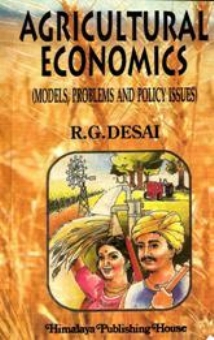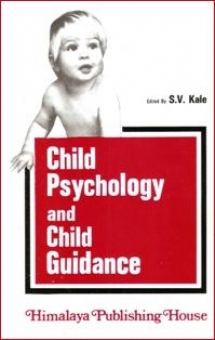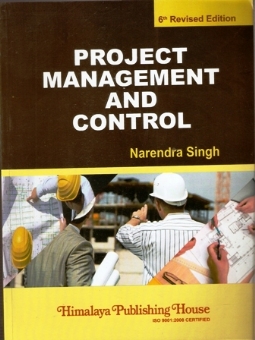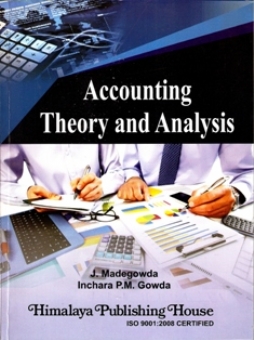The definition of employee relations refers to an organisation’s efforts to create and maintain a positive relationship with its employees. By maintaining positive, constructive employee relations, organisations hope to keep employees loyal and more engaged in their work. Typically, an organisation’s human resources department manages employee relations efforts; however, some organisations may have a dedicated employee relations manager role.
The Employee Legislation, The Labour Legislation or The Industrial Legislation or The Human Resources Legislation, whatever name it may be called refers to the one and the same concept that covers a number of legislations passed by the Parliament to procure for the employees, higher wages, healthy working condition, opportunity to advance, satisfaction at work, avenues for raising industrial dispute and protection against loss of wages, overwork and arbitrary treatment.
The present edition is divided into five Chapters.
Contents –
1 Introduction to Employee Relations
1.1 Introduction to Emloyee Relations
1.1.1 Definition to Employe Relations and Employee Relations Examples
1.1.2 Basic Dynamics of Employer – Employee Relations
1.1.3 Importance of Employee Relations
1.1.4 Employee Relationship Management – Key Principles
1.1.5 Implementation of An Employee Relations Plan
1.1.6 Employee Relations Specialist Duties and Responsibilities
1.1.7 Employee Relations Best Practices
1.1.8 Objectives of Employee Relations
1.1.9 Major Features of Employer – Employee Relations
1.1.10 The Scope of Employer – Employee Relations
1.2 Approach to Employee Relations
1.2.1 The Components of Industrial Relations Systems
1.2.2 Marked Features of Systems Approach of Employee Relations
1.2.3 Dunlop’s Approach
1.2.4 Weber’s Social Action Approach
1.2.5 The Human Relations Approach
1.2.6 The Gandhian Approach
1.3 Labour Policies – Historical Background
1.3.1 Labour Policy of India
1.3.2 Main Postulates of Labour Policy
1.3.3 Important Acts of Indian Labour Laws
1.3.4 Role of ILO and Its Influence on Legistration in India
1.4 Review Questions
1.5 Multiple Choice Questions (MCQs)
2. Mechanism for Harmonious ER
2.1 Mechanism for Harnomious ER – Introduction
2.1.1 Collective Bargaining: Definition and Meaning
2.1.2 Objectives of Collective Bargaining
2.1.3 Scope of Collective Bargaining
2.1.4 Importance of Collective Bargaining
2.1.5 Essential Pre-requisites for Collective Bargaining
2.1.6 Main Features of Collective Bargaining
2.1.7 Collective Bargaining Process
2.1.8 Main Hindrances for Collective Bargaining
2.1.9 Theories of Collective Bargaining
2.1.10 Reasons for the Growth of Collective Bargining Government Policy to Encourage Collective Bargaining
2.1.11 Advantages and Disadvantages of Collective Bargaining
2.2 Workers Participation in Management
2.2.1 Workers Participation in Management – Introduction and Meaning
2.2.2 Objectives of Workers Participation in Management
2.2.3 Level of Participation
2.2.4 Forms of Workers Participation in Management in India
2.2.5 Measures to Make the Scheme of Workers Participation More Meaningful
2.2.6 Evaluation of Workers Participation in Management Scheme
2.2.7 Suggestions for Effective Working of the Scheme and Conclusion
2.3 Grievance Management – Introduction
2.3.1 Grivance Management – Meaning and Definitions
2.3.2 Grievance Management – Concept and Nature
2.3.3 Grievance Management – Forms of Grievance: Factual, Imaginary and Disguised
2.3.4 Grievance Management – Identification of Grievance: and Proactive Methods of Addressing Grievances
2.3.5 Grievance Management – Causes of Grievances in Industrial Organisations
2.3.6 Grievance Management – Grievance Handling Procedures and Mechanism
2.3.7 Grievance Management – Grievance Procedure (Features and Benefits of Grievance Procedure)
2.3.8 Grievance Management – In Indian Industries and Settlement of Grievances
2.3.9 Grievance Procedure in Indian Industry and Conclusion
2.4 Review Questions
2.5 Multiple Choice Questions (MCQs)
3. Legislations Governing Employee Relations
3.1 Legislation Governing Employee Relations – Introduction
3.1.1 The Industrial Disputes Act, 1947 – Preamble
3.1.2 Definitions
3.1.3 Chapter II – Authorities Under This Act – Works Committee, Conciliation Officers, Board of Conciliation, Courts of Enquiry, Labour Courts, Tribunals, National Tribunals; Chapter II – A Notice of Change; Chapter II – B Reference of Certain Individual Disputes to Grievance Settlement Authorities; Chapter III Reference of Disputes to Boards, Courts or Tribunal.
3.1.4 Chapter IV – Procedure, Powers and Duties of Authorities
3.1.5 Chapter V – Strikes and Lock-outs
3.1.6 Chapter V-A – Lay-off and Retrenchment
3.1.7 Chapter V-B – Special Provisions Relating to Lay-off, Retrenchment and Closure in Certain Establishments;
Chapter V-C Unfair Labour Practices
3.2 Contract Labour (Regulation and Abolition) Act, 1970
3.2.1 The Contract Labour (Regulation and Abolitions) Act, 1970 Act No.37 of 1970 (5th September, 1970)
Preamble
3.2.2 Definitions
3.2.3 Chapter II – The Advisory Boards: Central Advisory Board, State Advisory Board, Power to Constitute
Committees
3.2.4 Chapter III – Registration of Establishments Employing Contract Labour
3.2.5 Chapter IV – Licencsing of Contractors
3.2.6 Chapter V – Welfare and Health of Contract Labour, Chapter VI – Penalties and Procedure
3.2.7 Chapter VII – Miscellaneous – 28. Inspecting Staff; 29. Registers and Other Records to be Maintained, 30.
Effect of Laws and Agreements Inconsistent with this Act; 31. Power to Exempt in Special Cases; 32 Protection of Action Taken under this Act; 33. Power to give Directions; 34. Power to Remove Difficulties; 35. Power to Make Rules;
3.3 Review Questions
3.4 Multiple Choice Questions (MCQs)
4. Legislation Governing Unions and Wages
4.1 Legislation Governing Unions and Wages
4.1.1 The Trade Unions Act, 1926 – Preamble, Definitiion
4.1.2 Chapter II – Registration of Trade Unions
4.1.3 Chapter III – Rights and Liabilities of Registered Trade Unions
4.1.4 Chapter IV – Regulations
4.1.5 Chapter V – Penalties and Procedure
4.1.6 Impact of Globalisation on Trade Union Movement
4.2 The Maharashtra Registration of Trade Union and Prevention of Unfair Labour Practics Act, 1971
4.2.1 The Maharashtra Recognition of Trade Unions and Prevention of Unfair Labour Practices Act, 1971 – Preamble, Definition
4.2.2 Chapter II – Authorities Under this Act – Industrial Court, Labour Court, The Investigating Officer
4.2.3 Chapter III – Recognition of Unions
4.2.4 Chapter IV – Obligation and Rights of Recognised Unions, Other Unions and Certain Employees
4.2.5 Chapter V – Illegal Strikes and Lock-outs
4.2.6 Chapter VI – Unfiar Labour Practices
4.2.7 Chapter VII – Powers of Courts
4.2.8 Chapter VIII – Powers of Labour Court and Industrial Court to Try Offence Under the Act
4.2.9 Chapter IX – Penalties
4.3 Minimum Wages Act, 1948
4.3.1 Minimum Wages Act, 1948 [11 of 1948] – Preamble, Definitions
4.3.2 Fixing and Revising of Minimum Rates of Wages – Sections 3 to 5, Section 11, Sections 13 to 17
4.3.3 Advisory Board and Committees – Sections 7 to 9, State Amendments Maharashtra Section 19
4.3.4 Maintenance of Registers and Records – Section 18
4.4 Review Questions
4.5 Multiple Choice Questions (MCQs)
5. Legislation Governing Working Environment – 1
5.1 Legislation Governing Working Environment
51.1 The Factories Act,1948 – Preamble
5.1.2 Interpretation and Definitions
5.1.3 Chapter III – 11. Cleanliness, 12. Disposal of Wastes and Effluents, 13. Ventilation and Temperature, 14. Dust and Fume. 15. Artificial Humidification, 16. Overcrowding, 17. Lighting, 18. Drinking Water, 19. Latrines and Urinals, 20. Spittoons
5.1.4 Chapter – IV – Safety – Sections 21 to 41
5.1.5 Chapter V – Welfare – Sections 42 to 50
5.1.6 Chapter VI – Working Hours of Adults – Sections 51 to 66
5.1.7 Chapter VII – Employment of Young Persons – Sections 67 to 77
5.1.8 Chapter VIII – Annual Leave with Wages – Sections 78 to 84
5.2 The Maharashtra Shops and Establishment (Regulation of Employment and Conditions of Services Act, 2017)
5.2.1 The Maharashtra Shops and Establishments (Regulation of Employment and Conditions of Service) Act, 2017 – Preamble, Preliminary Sections 1 to 5
5.2.2 Chapter II – Registratioin of Establishment – Sections 6 to 10
5.2.3 Chapter III – Opening and Closing Hours, Hours of Work, Interval for Rest, Spread-Over, Wages for
Overtime and Weekly Off – Sections 11 to 17
5.2.4 Chapter IV – Leave with Pay and Payment of Wages – Section 18
5.2.5 Chapter V – Welfare Provisions – Sections 19 to 26
5.2.6 Chapter VI – Enforcement and Inspection – Sections 27 and 28
5.2.7 Chapter VII – Offence and Penalties – Sections 29 to 33
5.2.8 Chapter VIII – Miscellaneous – Sections 34 to 39
5.3 Maternity Benefit Act, 1961 Entire Act and Latest Amendment Sections 1 to 30
5.3.1 Maternity Beneift Act, 1961 Entire Act and Latest Amendment – Sections 1 to 30
5.4 Sextual Harassment of Women at Workplace (Prevention, Prohibition, Redressal Act) 2013
5.4.1 Sexual Harassment of Women at Workplace (Prevention, Prohibition and Redressal) Act, 2013 –
Preamble and Definition – Sections 1 to 3
5.4.2 Chapter II – Constitution of Internal Complaints Committee – Section 4
5.4.3 Chapter III – Constitution of Local Complaints Committee – Sections 5 to 8
5.4.4 Chapter IV – Complaint – Sections 9 to 11
5.4.5 Chapter V – Inquiry Into Complaint – Sections 12 to 18
5.4.6 Chapter VI – Duties of Employer – Section 19
5.4.7 Chapter VII – Duties and Powers of District Officer – Section 20
5.4.8 Chapter VII – Miscellaneous – Sections 21 to 30
5.5 Review Questions
5.6 Multiple Choice Questions (MCQs)







